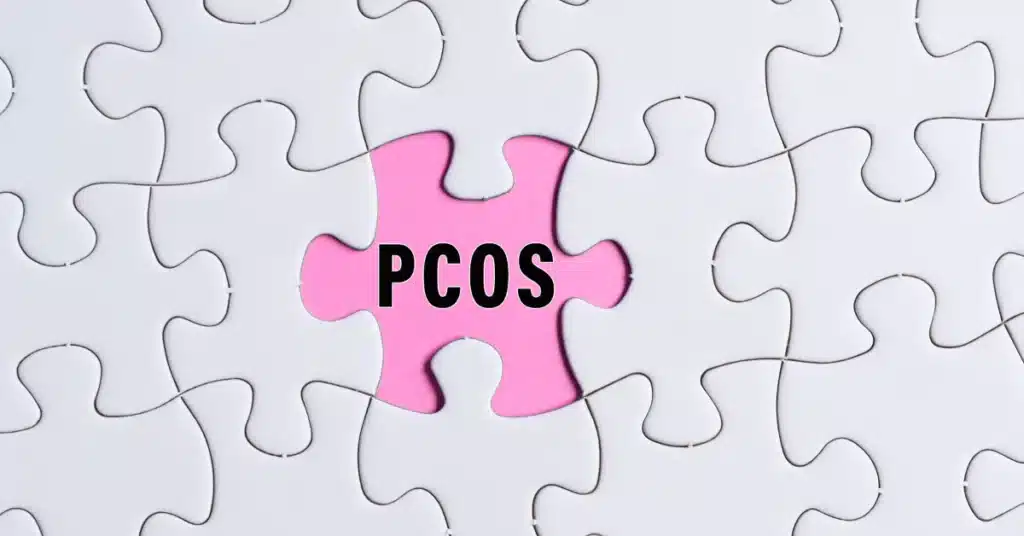Women with high testosterone levels may experience unwanted signs such as excess hair, acne, infertility, weight gain, and many more.
It is often believed that testosterone is produced by men only, but that’s not true.
Small amounts of testosterone are also generated in female adrenal glands and ovaries.
So, having some testosterone in their blood is entirely natural and expected in women.
However, if you’re a woman with greater testosterone levels than usual, this might cause several symptoms that impact your physical and mental well-being.
Continue reading the article to discover the signs of high testosterone in women.
Also, learn about its potential causes and treatment methods.
Signs of high testosterone in women
In a person, testosterone is essential for maintaining libido or sex drive, production of new blood cells, bone mass, and mood regulation.
In females, the interaction of testosterone and estrogen aids in the development, maintenance, and repair of reproductive tissues.
However, at a certain point in their lives, women may have high testosterone levels which can lead to adverse effects.
These include excessive weight gain, acne, infertility, and facial hair growth.
On the other hand, with increased age, men and women may experience low testosterone levels.
Normal testosterone secretion by the female body is far lower than that by the male body.
Healthy male testosterone levels normally vary from 280-1,100 nanograms per deciliter (ng/dL), whereas female levels usually range from 15 to 70 ng/dL.
Any value beyond that is considered high.
Acne and excessive hair growth are two of the most common and visible signs of high testosterone in women.
Besides this, a woman having higher testosterone levels may also experience any of the following symptoms:
- Increased weight or Obesity
- Fertility problems
- Irregular menstrual cycles
- Mood shifts
- Deepening of the voice
- Balding
- Increased size of the clitoris
Causes of high testosterone in a woman
 Source: Jeenmarinda
Source: JeenmarindaUsually, underlying health issues are the major cause of high testosterone levels in women.
These include Polycystic Ovarian Syndrome (PCOS), Congenital Adrenal Hyperplasia (CAH), thyroid issues, and insulin resistance.
PCOS: It is a prevalent cause of high testosterone levels among women.
In the US, 5–15% of women between the ages of 15 and 49 experience high testosterone due to PCOS.
It is a challenging, undertreated medical illness that can cause hormonal imbalances and raise testosterone levels.
CAH: is a set of hereditary diseases affecting the adrenal glands.
In CAH, the enzyme necessary to control the release of testosterone is absent.
This, in turn, leads to the generation of more testosterone.
Thyroid gland: This gland influences various biological processes including metabolism and the generation and distribution of hormones in the body.
Studies have verified a connection between testosterone levels and Hypothyroidism (an underactive thyroid condition).
Hypothyroidism may decrease the synthesis of sex hormone-binding globulin (SHBG), which is essential for maintaining the balance of sex hormones in a person’s blood.
Low SHBG concentrations can result in high testosterone levels in women’s blood.
| Sex hormone-binding globulin (SHBG) or sex steroid-binding globulin (SSBG) is a glycoprotein that attaches to androgens and estrogens and transports them to target tissue. |
Insulin: This is responsible for regulating blood sugar levels.
When the body develops resistance to the hormone insulin, blood sugar levels rise. After that, insulin is not used in the blood, encouraging the ovaries to produce more testosterone.
Diagnosing and overcoming high testosterone levels in women
Blood testing can be used to identify high testosterone levels in females.
The doctor may perform a physical examination to determine the underlying cause of high testosterone levels.
If your doctor suspects PCOS, they could also advise doing an ultrasound to examine your ovaries and uterus.
The doctor may also advise medication and lifestyle changes to lower your testosterone levels depending on your symptoms and the underlying cause.
Medication
Women with high testosterone levels may lower their testosterone levels with specialized prescribed hormone medicines.
Spironolactone, sometimes called a “water pill,” is an anti-androgen that lowers testosterone production.
Sometimes, oral contraceptives are also used to treat and prevent the overproduction of testosterone.
Low dosages of Norgestimate, Desogestrel, and Gestodene are included in the best oral contraceptives for boosting testosterone levels.
Lifestyle changes
 Source: marilyna
Source: marilynaIn general, reducing symptoms of high testosterone and improving quality of life can be accomplished by treating the condition’s root cause.
Besides medications, certain lifestyle changes also aid in lowering testosterone levels.
Keeping a healthy weight may help with the treatment of symptoms of hormone imbalance.
According to some studies, decreasing even 5–10% of one’s body weight might enhance fertility, normalize menstrual cycles, and lessen PCOS symptoms in patients.
Women might also take natural supplements like saw palmetto to lessen the signs of high testosterone.
In addition to the above-mentioned natural methods, women should also consider introducing particular foods into their diets to reduce testosterone levels.
Foods with anti-androgenic properties, like flaxseeds, spearmint tea, and licorice root, may help women’s testosterone levels decline.
Conclusion
Females with high testosterone levels may experience negative impacts on their physical and mental health.
One of the most prevalent and obvious signs of high testosterone in women is acne and excessive hair growth.
High amounts of testosterone in females can result from several medical issues.
These include insulin resistance, Congenital Adrenal Hyperplasia (CAH), thyroid problems, and Polycystic Ovarian Syndrome (PCOS).
The best treatments for excessive testosterone in women include medications and lifestyle modifications.
However, consultation with a certified healthcare expert is essential before opting for any treatment methods.
Frequently Asked Questions
What are the signs of high testosterone in women’s personalities?
Heavy voice, excessive facial and body hair, enlarged clitoris, irregular menstrual cycles, and acne are visible signs of high testosterone in women’s personalities
How high testosterone in women can be treated?
The treatment of high testosterone in women can be achieved with medications and lifestyle changes, including maintaining a healthy body weight and having a healthy diet.
How does high testosterone in women affect them emotionally?
Besides affecting physical health, high testosterone levels in women can affect them mentally, too. It can lead to mood swings and irritability.
When is testosterone highest in females?
The amount of hormones released by the body changes throughout the day. In general, testosterone levels are highest in the morning in females.
How do you feel when your testosterone is high?
High testosterone levels may cause low libido or reduced sexual desire. Some individuals may also experience mood swings and irritability due to high testosterone.
When referencing outside resources, GoodrxMedicine always provides full citations. To learn more about the measures we use to maintain the quality of our content, please review our Content Information Policy.










